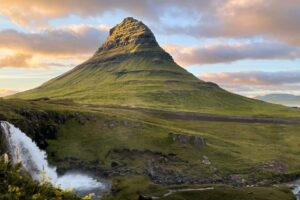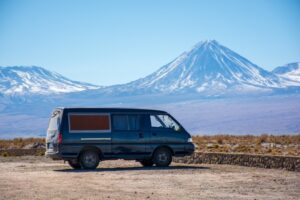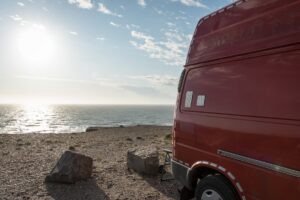Iceland, the land of fire and ice… and waterfalls! And there is no better and more affordable way to explore the Icelandic nature than by campervan! Having your own car gives you the flexibility to discover the incredible landscapes and sights at your own pace. Having a home on wheels gives you the flexibility to decide where and when you park your car for spending the night at one of the many campsites. When you are hungry or in the mood for a coffee or hot coco, you just jump in the back and you prepare yourself something to eat or to drink.
In this blogpost, we’ll give our best advice and tips regarding campervanning in Iceland. So buckle up and enjoy the ride!
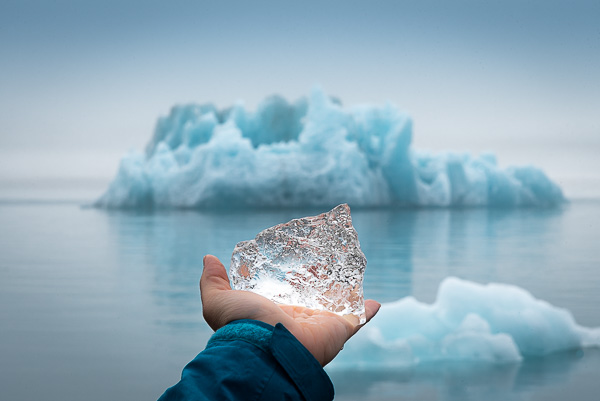
Some of the links on this blog are affiliate links. This means if you click on a link and purchase, we receive a small commission at no additional cost to you. The affiliate links concern only products and services we appreciated highly and trust. This means the views and opinions expressed in this post are purely our own. For more information, read our privacy and cookie policy.
Table of Contents
Overnight camping in Iceland
Off-grid camping
In contrast to Norway, wild camping in Iceland is forbidden. However, if you get the permission of the landowner, then you are not breaking the law.
Campsites in Iceland
Luckily, Iceland has a good network of campsites. So despite the fact that wild camping is illegal, it shouldn’t be a problem to find a place to park your car for the night on one of the many campsites on the island. As Iceland is a rather expensive country, campsites’ rates are also high. Average prices range between 1500-2500 ISK (€10-€18) per person per night. Expect to pay extra for certain amenities like a shower (400-700 ISK) and laundry services. Because the weather in Iceland can be challenging at certain times, campsites often have a shelter for cooking. It’s always a good idea to check on Google reviews how campsites are performing and to compare campsites regarding the amenities they offer.
TIP – Iceland offers some great swimming pools. So instead of paying for the shower on the campsite, you could opt to visit the local swimming pool. Prices are on average between 700 and 1000 ISK per person. Main advantage is that, after your shower (!), you can enjoy a hot tub with often some spectacular views over the Icelandic landscapes. Keep in mind that the swimming pool rules in Iceland ask you to shower without a bathing suit before entering the pool area.
If you are traveling on a budget, we highly recommend the camping card. This camping card gives one family (2 adults and 2 children) access to over 40 campsites during 28 days and costs 22.000 ISK (~ € 159). Although the camping card gives access to the different campsites, showers are not always included for camping card holders. The main disadvantage of the camping card is that camping card campsites are often more busy than the other campsites. Nevertheless, the camping card is the way to go if you want to travel affordable in Iceland.
Below, you can find a map of all the campsites where you can use the camping card.
How to get to Iceland with your own campervan
There is only one way to get your camper from ‘mainland’ Europe to Iceland and that is by ferry. If you are looking for a passenger ferry, then your only option is the company “Smyrilline”. Their ship “Norröna” departs weekly from Denmark in high season. Prices depend hugely on the cabin you choose and the size of your campervan. Average prices are between 500 and 1000 euro for a return ticket.
Renting a campervan in Iceland
There are many companies in Iceland that are renting out campervans to travelers. We highly recommend Kuku Campers as they offer affordable, neat and cool campervans for any type of traveler. What we liked the most is their great customer service. For instance there is a free shuttle bus from and back to the airport. All you have to do is send them your flight information and there will be someone waiting for you at the arrival hall to drive you to their office. Awesome. We felt like they really cared about their customers and even gave updates via mail when the weather gets rough.
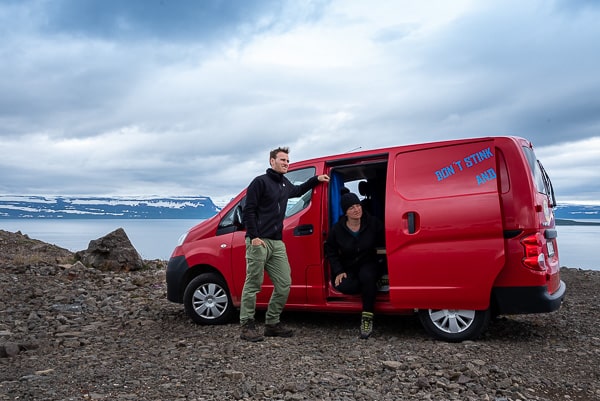
Choosing a reliable renting company is one thing, but there are more things to keep in mind when choosing a campervan in Iceland:
- How much room do you need? This depends of course on the number of persons who will be traveling with you. But if you are traveling for a longer period in Iceland, you might want to have more space or luxury compared to a one week visit. Kuku Campers offers a good range of campervans including 2 persons, 3 persons, 5 persons and also 4X4 campervans.
- Do you need a 2WD or a 4WD? This depends on your travel itinerary (and your budget). Will you limit your itinerary to the main attractions, situated around the Ring Road, or will you go inland via F-roads? If you want to travel along the F-roads you definitely need a 4WD (a 2 WD vehicle is not allowed on the F-roads). Going on an F-road without a 4X4 will violate your insurance and the police will even give you a fine. A 4WD vehicle is more expensive (for renting, insurance and for fuel), so keep this in mind when preparing your itinerary.
- Diesel heater or not? Some campervans have a diesel heater, others haven’t. We highly recommend to choose for a van with a diesel heater. During our trip in June, we had a couple of nights where temperatures were just above freezing level. Being able to warm up the van in the evening definitely made the evenings and nights more comfortable. They heat up very quickly and make your campervan super cozy!
What is the best time to go?
If you look at a map, you will see that Iceland is at the northernmost end of Europe and weather conditions can be rough. There is no right time to visit, but the season will of course impact the type of Iceland you’ll experience.
Winter in Iceland
Winter in Iceland definitely means colder temperatures and snow. Daylight hours are limited and many campgrounds are closed. Although there is winter maintenance on the Ring Road, other roads might be impassable. Main advantages of winter are definitely the fewer tourists and the possibility to see the Northern Lights. If entering an ice tunnel and visiting frozen waterfalls is high on your bucket list, then the winter season is your time to visit Iceland.
Summer in Iceland
Tourism peaks in Iceland when it’s summer so expect to see lots and lots of fellow travelers at the main sights. However, summer season in Iceland has some huge advantages. The temperatures are more moderate and you can take advantage of the midnight sun, meaning you have extended daylight hours and are able to explore Iceland almost day and night. If you are lucky you can still admire waterfalls at 11PM. And because the sun sets really slowly you also have more time to make gorgeous photos during golden hour. Another advantage is that you’re also able to see more wildlife: There are whale watching tours and in the summer months, the puffins come ashore to lay their eggs. Something you can’t miss when visiting Iceland!
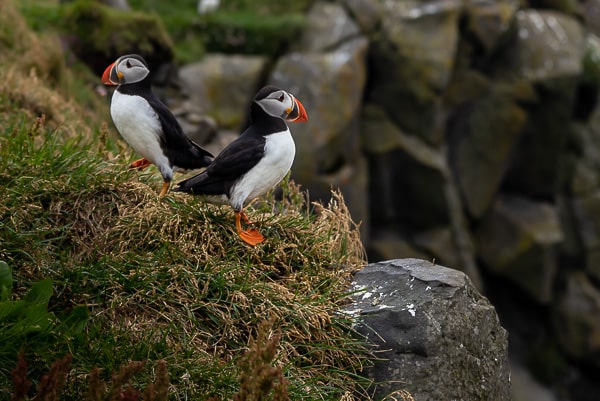
Shoulder seasons – Spring and autumn
During the shoulder season, there are less tourists, but keep in mind that campsites might not be open yet (spring) or might have closed already (autumn).
Driving in Iceland
Iceland felt like the ultimate road trip! The scenery is beautiful, roads are in good shape and the landscapes are stunning. Expect green hills, endless fields of lupins and black sand beaches. In Iceland you drive at the righthand side. Keep in mind that during downhill stretches, brakes may overheat. Apply mountain driving skills and drive in a low gear. Always check road.is for updates on road closures and en.vendur.is for accurate weather forecasts.
The different roads in Iceland
In Iceland they have three different types of roads: paved roads, gravel roads and F-roads. All the roads have their own number which makes navigating really convenient. Our rental company Kuku Campers gave us a small map and explained the differences between the roads right away.
Highway number 1 is also known as the Ring road. As the name suggests it’s the main road of Iceland and covers about 1300 kilometers. This road is open all year round. The maximum speed is well marked on all roads. You can drive 90 km / hour at highways.
It is allowed to drive with a normal car on gravel roads. But keep in mind that you need to slow down your speed.
F-roads or mountain roads will bring you to the center of Iceland. These roads require a 4WD vehicle and are only open for a short time during the summer months. All F-roads are well marked.
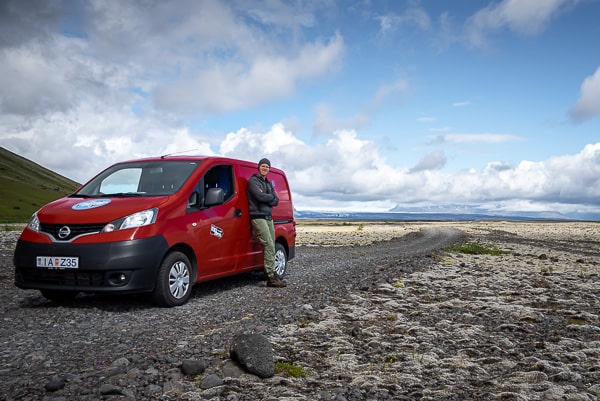
What documents do you need?
If you have a driving license that is issued in a EU/EEA country, you can use it in Iceland for as long as it is valid. Driving licenses from most countries outside the EU/EEA like Canada and the USA can be used in Iceland.
The most important driving rules in Iceland
- Don’t drink and drive, alcohol fines start at 550 euro.
- Mobile phone use is not allowed
- Wear seat belts at all times
- Lights on, always!
Gas stations in Iceland
There is an extensive network of gas stations in Iceland, mostly located near a village or town. In more remote parts in Iceland (e.g., inland or the West fjords) there can be quite some distance between two gas stations. So we definitely recommend to always keep an eye on your tank level and to fill up the tank even if it’s not empty yet, especially when you’re driving in more remote areas. Prices per liter fuel don’t vary a lot between different gas stations.
Note that you will need a debit card with PIN number if you want to be able to pay at the pump in gas stations in Iceland. If you don’t have a debit card with PIN number, you will be restricted to pay during business hours in gas stations that are staffed (but not all gas stations are staffed).
There are three major gas stations in Iceland:
N1 – N1 has 95 gas stations widely spread over the island. These gas stations are open 24/7 but are staffed only during business hours. Often, they have small shops where you can also drink or eat something and buy gas bottles for your camping gas stove. Our rental company offered us a discount card for fuel at N1 and some vouchers for free coffee.
Olís (related to OB) – Same as N1, these stations are widely spread across Iceland and are open 24/7, but only staffed during business hours. Their discount card, that was offered by our rental company gave a discount per liter fuel, free Wifi inside, a 10% discount in their restaurants and a discount coffee. Larger gas stations also have car wash areas, to clean the dirt from your car when necessary.
Orkan – Orkan has approximately 70 self service gas stations, You pay at the pomp before filling up your tank. They accept all major credit cards but it is also possible to pay with Apple and Google pay.
Ferries in Iceland
For certain routes you will have to use a ferry to get from point A to point B. These ferries are easy to use. You pull up and wait until a ferry employee will show you where to park your car. Sometimes, you have to pay on the ferry (card or cash), sometimes the invoice will be send to you afterwards via your license plate and rental company.
Other things to know
- All Icelanders speak English to a certain level.
- Free toilets in Iceland are very hard to find, except in gas stations. So when filling up your tank, take the advantage to visit the restroom before you continue your journey.
- Alcohol is expensive in Iceland. It is possible to bring some alcohol with you, but keep in mind that the allowance for alcohol is restricted to six units per person.
- Not all stores are not allowed to sell alcohol. The only stores that are allowed to sell alcohol are government owned and are called Vínbúðins. You have to be 20 years or older to buy alcohol in Iceland.
- In general, Iceland is an expensive country. However, if you do groceries in affordable shops (e.g. BONUS) and you cook for yourself, it is possible to travel relatively affordable.
Iceland essentials when traveling in a campervan
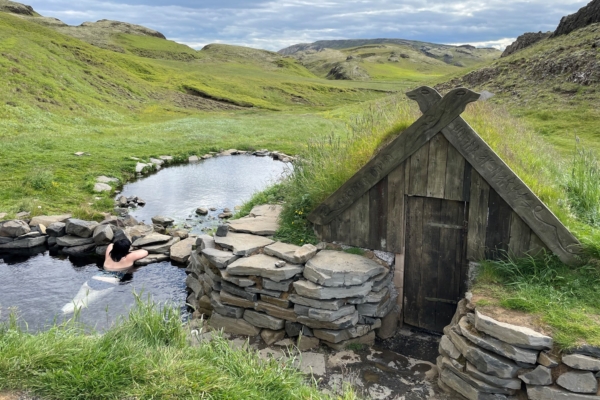
Here is an overview of things you should consider taking with you when campervanning in Iceland. Note that this isn’t a complete list, but just the main essentials you should have with you specifically when campervanning. We’re currently preparing a post about the clothes you should take with you to Iceland, so stay tuned!
- Book Lonely Planet Iceland– Not only is a Lonely Planet ideal to plan ahead, but it is also excellent for discovering hidden gems along the way. Definitely a must to have when travelling with a campervan in Iceland.
- Drone Mavic Mini 2– The landscapes in Iceland are stunning. If you love photography or videography, a drone is a must-have in Iceland.
- A power bank to keep your electronics like smartphones, drone, tablet, camera, … powered.
- A sleeping bag and extra fleece blanket to keep you warm during cold nights (you’ll even need this in summer). You can rent sleeping bags at the campervan rental company, but to save you some bucks, you could bring your own with you.
- Packing cubes – The size of a campervan doesn’t fit a wardrobe, so to keep everything organized, we highly recommend packing cubes.
- A reusable water bottle – The water in Iceland is one of the purest in the world, so no need to buy water in plastic bottles.
- A swimsuit and quick dry towel – Iceland has many natural hot pools and excellent swimming pools, so a swimsuit and a quick dry towel are an essential to take with you when traveling through Iceland. Consider taking a washing line with you to hang in the car, so your things can dry when driving. Slippers are a good idea for the walk from your car to the hot pool and back.
Happy camping!
Matthias and Mieke
Quick start your holiday with the help of our trusted tools
These are the websites we highly recommend to plan your next trip. We use them all the time to save money and travel freely! Did you know that by purchasing through our links, you support us at no additional cost. Thank you for your support. ♥️
Find hotels: via booking.com
Find a rental car: via discovercars.com
Find cheap flights: via skyscanner.com
Book tours & attractions: via getyourguide.com
Book a bus / train / transfer: via omio.com—
